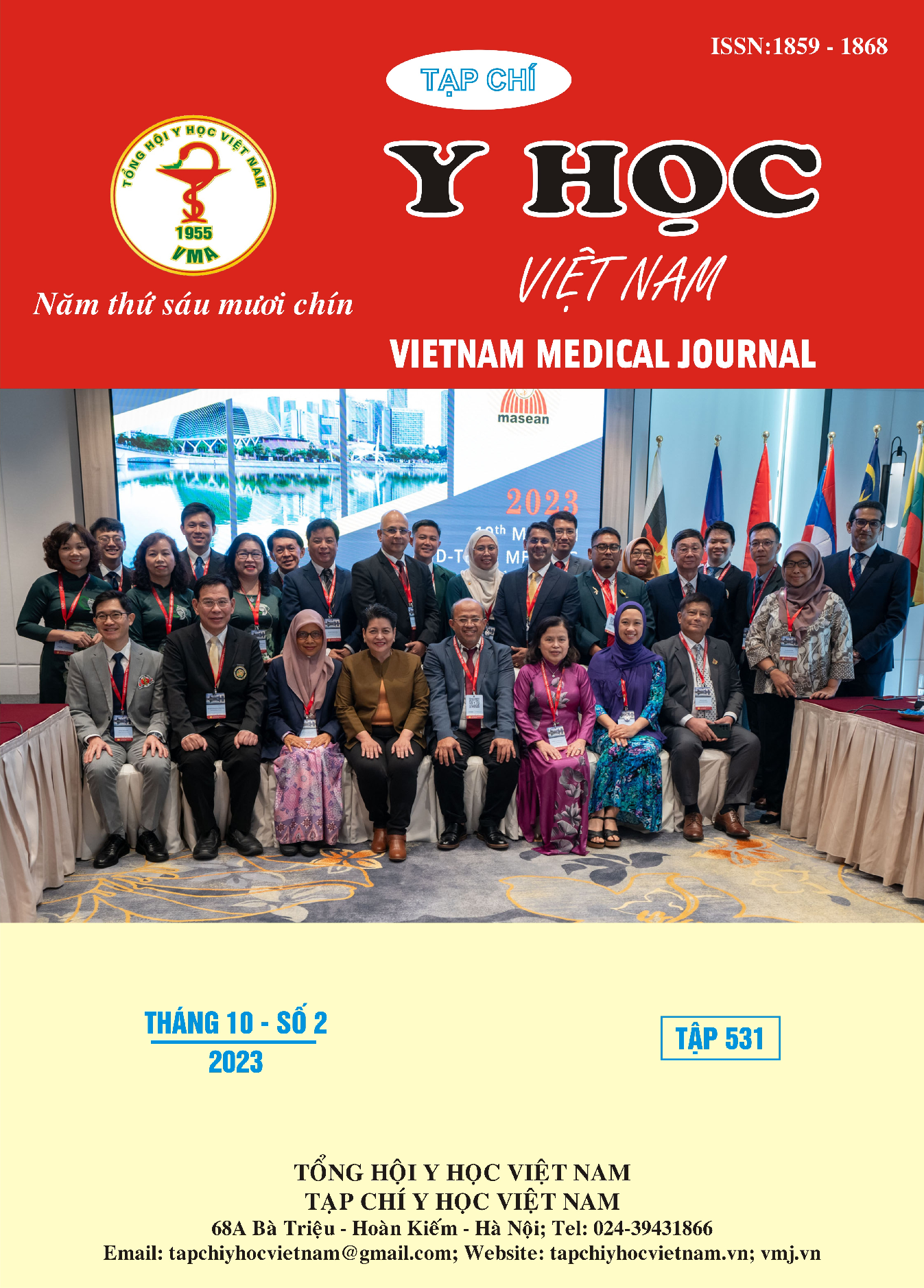RESULT OF ALLOGENEIC TRANSPLANT FOR TREATMENT OF APLASTIC ANEMIA AND ANALYSIS OF FACTORS RELATED TO TRANSPLANT EFECTIVENESS AT THE NATIONAL INSTITUTE OF HEMATOLOGY AND BLOOD TRANSFUSION DURING PERIOD 2017-2022
Main Article Content
Abstract
The study illustrated the outcome of allogeneic stem cell transplantation in 26 patients with severe aplastic anemia at National Institute of Hematology and Blood Transfusion from 2017 to 2022. We found that 3-year overall survival was 83,3%, all patients had hematopoietic recovery in which 3/ 26 patients died. The most common complication was infection (96,2%), followed by chronic (38,5%) and acute graft-versus-host disease (23,1%). Various factors were employed on the univariate Cox analysis of survival, in which we found no statistically significant correlation. We conclude that allogeneic stem cell transplantation from a matched related donor with peripheral blood as stem cell source is a highly effective treatment for severe aplastic anemia and should be applied more widely in patients >40 years of age or with poor response to immunosuppressive therapies.
Article Details
References
2. Young NS. Aplastic Anemia. Longo DL, ed. N Engl J Med. 2018;379(17):1643-1656. doi: 10.1056/NEJMra1413485
3. Võ Thị Thanh Bình, Bạch Quốc Khánh. Kết quả ghép tế bào gốc đồng loài máu ngoại vi từ người hiến phù hợp HLA điều trị suy tủy xương tại Viện Huyết học Truyền máu Trung Ương (2010-2022). Tạp Chí Y Học Việt Nam. Published online 2022.
4. Srinivasan R, Takahashi Y, Philip McCoy J, et al. Overcoming graft rejection in heavily transfused and allo-immunised patients with bone marrow failure syndromes using fludarabine-based haematopoietic cell transplantation. Br J Haematol. 2006;133(3):305-314. doi:10.1111/j.1365-2141.2006.06019.x
5. Bacigalupo A, Socié G, Schrezenmeier H, et al. Bone marrow versus peripheral blood as the stem cell source for sibling transplants in acquired aplastic anemia: survival advantage for bone marrow in all age groups. Haematologica. 2012;97(8):1142-1148. doi:10.3324/haematol.2011.054841
6. Purev E, Tian X, Aue G, et al. Allogeneic transplantation using CD34+ selected peripheral blood progenitor cells combined with non-mobilized donor T cells for refractory severe aplastic anaemia. Br J Haematol. 2017; 176(6):950-960. doi:10.1111/bjh.14448
7. Devillier R, Dalle JH, Kulasekararaj A, et al. Unrelated alternative donor transplantation for severe acquired aplastic anemia: a study from the French Society of Bone Marrow Transplantation and Cell Therapies and the EBMT Severe Aplastic Anemia Working Party. Haematologica. 2016;101 (7):884-890. doi:10.3324/haematol.2015.138727
8. Bacigalupo A, Socié G, Hamladji RM, et al. Current outcome of HLA identical sibling versus unrelated donor transplants in severe aplastic anemia: an EBMT analysis. Haematologica. 2015;100(5):696-702. doi:10.3324/haematol.2014.115345


